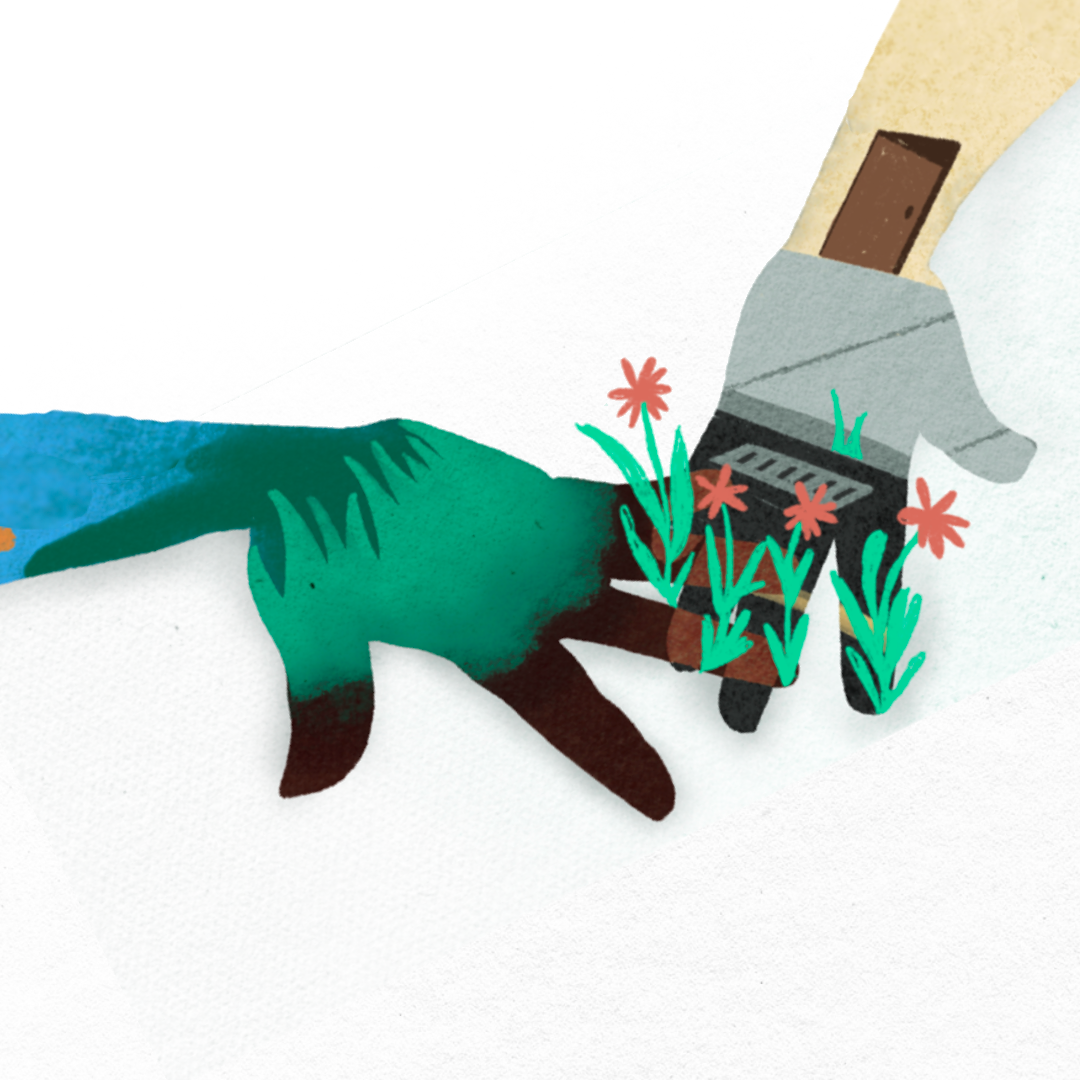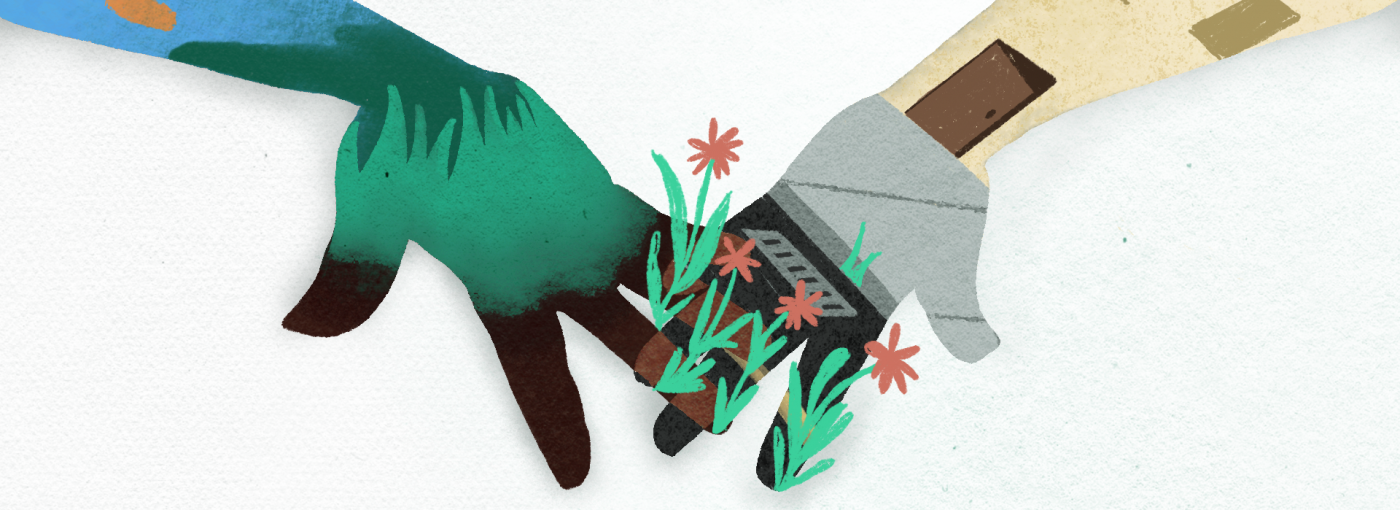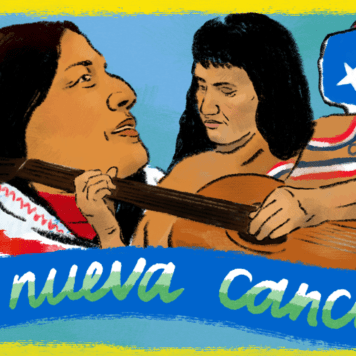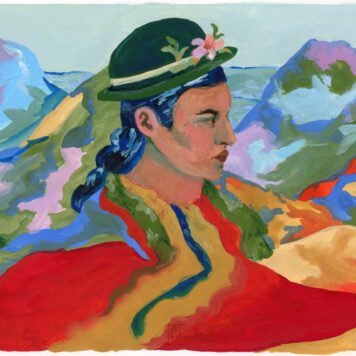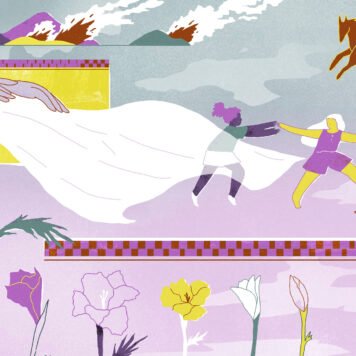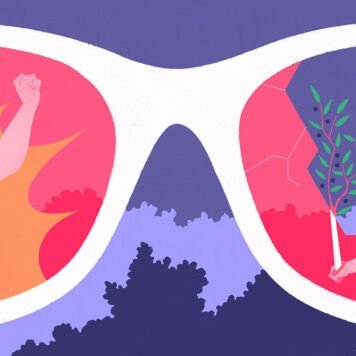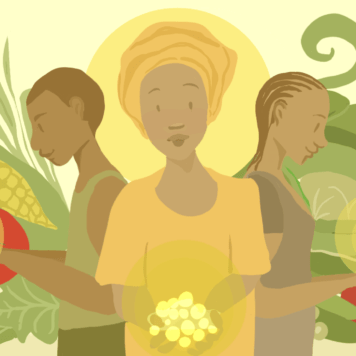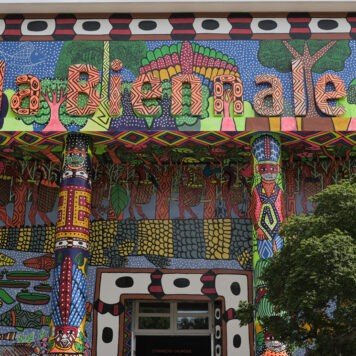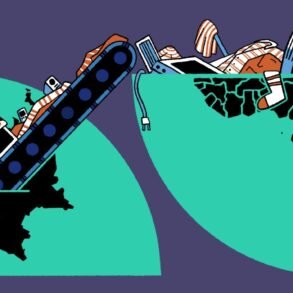I have been able to reclaim my identity as a P’urhepecha woman, and embark on a journey of reconnecting, because of the love, honesty and wisdom I’ve received from other Indigenous women in the diaspora.
When I connected with Angela Camacho, aka La Bonita Chola, an Indigenous woman from Bolivia raised in Argentina and now residing in London, I was reminded that although we may be Indigenous in a multitude of different ways, at the end of the day we are all fighting for cultural survival within diasporic realities.
We are all fighting for our preservation, and for the hope that generations to come will see a day where we can return home to fully sovereign nations. In that journey as Indigenous women, fighting for a common goal, we can support one another through a decolonial sisterhood that centres our beauty, ceremonies and rematriation across territories.
As Indigenous people, we are not tied to one single territory or even a present timeline. We exist in multiple realities by connecting with our ancestors and building a different world for future generations. And as Angela describes in her own upbringing as an Indigenous person in diaspora, we live “between two worlds” – one where we are asked to reject our Indigenous identity, and the other world where we are reclaiming our Indigenous knowledge.
Between Two Worlds
Angela says that, in many ways, she was able to only exist in a “bubble”; a world where her Indigenous identity was never questioned because everyone around her was of the same background.
She describes her upbringing in Buenos Aires as living in a street surrounded by her Bolivian family, which meant that the people she interacted with on a daily basis had similar physical features as her and were following a Bolivian “cultural calendar.” Angela recognises now that these Bolivian traditions that her family didn’t want to affirm outloud are Indigenous practices.
It wasn’t until she stepped out of this family bubble that she was confronted with the realities of white settler colonial Argentina. As Angela says, “Since the creation of colonies, the ‘whitening’ processes started, and in certain territories they have been more devastating than in others, such as in Argentina, Chile and Uruguay. The demographics and geography of those territories facilitate cultural genocide. This part of the continent looks a lot like parts of Europe… its flat land and weather can be similar.”
In a different context, Angela’s story made me reflect on my own childhood and cultural ‘bubbles’ that impacted my identity as an Indigenous woman. During my formative childhood years, I was raised in our pueblo in Mexico – so Angela’s words about being Indigenous also rang true to me. “It was a daily act we didn’t have to name or think twice about.” Like Angela, I was simply existing as a child in a community with people that were racialised like me, and following a calendar of events that is deeply connected to the cycles of the land and water.
However, once my family migrated to the most Northwest region of the United States, I suddenly became hyper aware of how brown my skin was, how thick and dark the hair growing from my body was, and how ‘big’ my nose was compared to my white peers.
Angela’s story inspired me as she describes being called “Pocahontas” as an insult by her classmates, but yet never being offended by such comments. She recalls responding to one boy in particular, telling him: “Pocahontas was a beautiful woman, and Indigenous royalty. I know I am beautiful, perhaps not to you , but I know I am”.
She went on to describe other attempts by her white peers to break her confidence as an Indigenous woman, especially other white women, yet Angela always understood that: “I couldn’t compare myself to anybody else, because I knew I would never be white”.
Angela also comments on the fact that she and I are quite “digestible” Indigenous women when it comes to Eurocentric beauty standards. “We pass,” she says. “We are beautiful, we don’t have certain factors heavily marked on our face [that are associated with Indigenous people], we are not the darkest amongst our people; we don’t use our regalia every day, we can communicate in Spanish and English, we are educated…”
I completely agree with Angela’s description of our privileged identities even when marginalised in society, and I believe what is most important is what we choose to do with such platforms in the world, and the issues and movements we have the ability to bring awareness to.
In many ways I wish I had been surrounded by more women like Angela when I was young and ashamed of my Indigenous features. Yet I also know at my core that it is never too late to come home to our brown bodies and love them the way they always deserved to be loved and cared for.
This to me is where we can begin to build a different kind of sisterhood amongst Indigenous women that provides the love and support that many of us didn’t receive growing up. A community where we can reclaim our sexuality and beauty outside of exploitation and fetishisation, and preserve our cultures to build a future where all Indigenous women feel safe and beautiful.
Indigenous Feminism
Speaking to women like Angela only reaffirms my beliefs that for Indigenous women to survive in this world, we will only continue walking further away from a Westernised definition of feminism. As Angela says, “Feminism doesn’t work for me. I use the word “feminism” as a framework for folks to better understand my positionality, but I dont know who all these feminists writers are. I have been given books, but I don’t read them. Because I open [these feminists textbooks] and I try to understand them but I can’t. They were not written with someone like me in mind. My references are others…[they are] Indigenous womens’ work that reaches me even through the diaspora”.
Thinking about my own recent confrontations with what it means to be a feminist as an Indigenous women and then asking Angela about her connetion to feminism, I realise that for Indigenous women, feminism as it exists in mainstream social movements will never serve our needs.
As Indigenous women, what we are seeking is rematriation, a form of liberation that is directly tied to our land and intergenerational communities. Our learning of solidarity and liberation with other women comes from community knowledge that as Angela points out is learned through “theory from the streets, theory that academia will never understand.”
This is why I don’t imagine Indigenous liberation from women to come from institutions. Instead it is being formed through speaking from the homes and tongues of our grandmothers.
Our liberation is coming to fruition in our sweat lodges, and in the spaces where we can simply exist and cook, weave, dance, sing and share stories as Indigenous women with one another.
Subscribe to shado's weekly newsletter
Exclusive event news, job and creative opportunities, first access to tickets and – just in case you missed them – our picks of the week, from inside shado and out.

An Ancestor in the Making
I must confess there are times when reaching out to Indigenous women like Angela, I fear rejection as I still feel so ‘young’ in my reconnecting journey. I fear that I will be outed as some kind of imposter.
However, upon connecting to Indigenous women’s stories like Angela’s I realise that experiencing imposter syndrome about my own identity (which inherently means feeling imposter syndrome about my family’s lived experience), is a direct result of the cultural genocide project that Indigenous people globally have been under for over 500 years.
Fighting back against this cultural genocide requires that all of us who identify as Indigenous to acknowledge the responsibility that comes with such an identity and to realise that as Indigenous people we must have a strong political agenda. And sometimes the way we act upon this responsibility to our Indigenous lineage, or our responsibility as ancestors in the making is a quiet act of resistance.
Angela says this of the way her parents kept their culture alive. “They continued our practices in silence to protect and continue our Indigenous legacy. In the act of being ‘silent’ and ‘lowering your head’, it was an act of resistance, and an act of identity resilience. Because it is difficult to be silent, and to take insults, and it’s difficult to lose your land, it’s difficult to be displaced once again to new territories, but with that act of silence they extended our legacy and extended it towards me and now I extend it towards my son.”
The act of “silently” preserving our Indigenous identity that Angela spoke about deeply resonated with me as a reconnecting P’urhepecha women, because often times it’s when I am on my own, reflecting upon my ancestors’ lives, connection to land and water and stories of migration, that I find myself the most connected to our identity.
This act of re-connecting, remembering deep into our lineage, and dreaming of an sovereign Indigenous future will be a life-long journey. As Angela says, “You won’t create your Indigenous identity in two or three years, because we are trying to reconstruct an Indigenous identity under a society and system that is telling us not to be Indigenous… we must ask: who benefits from having me forget my culture? The system benefits from it, because it means I will stop defending my territory, I will stop amplifying the voices of land defenders.”
Living in diaspora as Indigenous people will never be an effortless process, especially when we consider the multitude of ways that Indigenous people globally have been displaced.
From enslavement and forced displacement from our territories, to forced seperation of Indigenous children from their families, which in many cases has led to Indigenous children being adopted by white families, the colonial project of cultural genocide is continued. This means we must extend our compassion and patience to all of our Indigenous relatives across the diaspora and invite them in, regardless of our differences.
Angela made it clear throughout our conversation that this must include our Indigenous Black relatives and LGBTQ2S+ (two-spirit) Indigenous relatives. It is in our Indigenous ways to create community and see each other as relatives, despite our bloodlines. Angela encourages: “If you don’t have family around you, look for community. Don’t believe the myth that there are no Indigenous people where you are living. In every country in the world, there are Indigenous relatives. We have to look for them, because there are always Indigenous people.”
In many ways that is how my own reconnecting journey as a P’urhepecha woman began.
I began building community first with Indigenous professors, and community advocates from the Lummi Nation, Nooksack Tribe, Samish Indian Nation and the Swinomish Indian Tribal Community, whose ancestral lands the University I graduated from occupies. After graduating I moved further South along Coast Salish territory and was finally able to connect with other P’urhepecha relatives. But even within the P’urhepecha community, because as a collective we are very clear we are living outside of our territory, our relationship to the Indigenous tribes whose land we are occupying only strengthens our power as Indigenous people globally.
In the words of Angela, we must defend whatever territory we are living in, because “when we claim to be Indigenous, we mark and reclaim sovereignty… I’ve been living in England for 20 years and I will defend it as my current territory, because under these buildings, under this concrete, there is Indigenous territory to defend.”
With this call to action, I feel all but more connected to my identity as a P’urhepecha woman. Angela calls on all of us to remember that, no matter where we are in the world, “we walk with our territories.”
What can you do?
- Read the following memoirs:
- Life in the City of Dirty Water by Clayton Thomas-Müller
- Braiding Sweetgrass by Robin Wall Kimmerer
- Read further articles by Samara:
- Follow Angela on Instagram
- Find out about the organisation Wretched of the Earth
- Listen to the podcast Raíces Verdes
